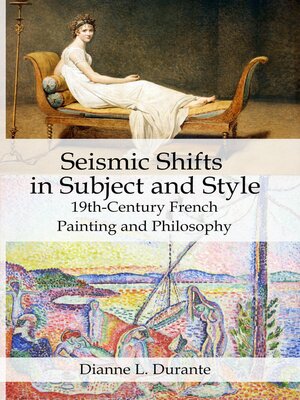Seismic Shifts in Subject and Style
ebook ∣ 19th-Century French Painting and Philosophy
By Dianne L. Durante

Sign up to save your library
With an OverDrive account, you can save your favorite libraries for at-a-glance information about availability. Find out more about OverDrive accounts.
Find this title in Libby, the library reading app by OverDrive.



Search for a digital library with this title
Title found at these libraries:
| Library Name | Distance |
|---|---|
| Loading... |
Why did subject and style in art change so dramatically over the course of the 19th century - from Madame Recamier, by Jacques-Louis David (1800) to Luxe, Calme et Volupte by Matisse (1904)? We'll look for an explanation through a combination of art analysis and philosophical detection.
Artistic trends are not the result of a collective consciousness working its will. Such trends are simply the styles that a majority of artists chooses to embrace. Each of those artists, in turn, makes his own choice of style. Over the 19th century, France was the epicenter of artistic change. We briefly survey the works of 18 French artists, including Neoclassicists, Romantics, Naturalists, Impressionists, Post-Impressionists, Pointillists, Symbolists, and Academics. Then we look at what these artists (as well as a few influential art critics) have to say about four crucial issues: the role of training; the role of reason vs. emotion in creating art; the importance of style vs. subject; and qualifications for judging art. Finally we see how these statements relate to the philosophical context of the time.







